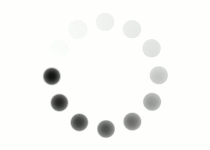Before your quiz, take some time to review the concepts in the quesitons below. If you get a question wrong, make sure to review the lesson before taking the quiz.
1. Which of the following transformations can NOT be used to form a frieze pattern?
- translation
- reflection
- dilation
- rotation
Dilations to not preserve the size of a figure and therefore can not be used to form frieze patterns.
Dilations to not preserve the size of a figure and therefore can not be used to form frieze patterns.
Dilations to not preserve the size of a figure and therefore can not be used to form frieze patterns.
Dilations to not preserve the size of a figure and therefore can not be used to form frieze patterns.
2. Which of the following describes a glide reflection?
- A combination of a dilation and a reflection.
- A combination of a rotation and a reflection.
- A combination of a translation and a rotation.
- A combination of a translation and a reflection.
A glide reflection is a combination of a translation and a reflection that is used to create frieze patterns.
A glide reflection is a combination of a translation and a reflection that is used to create frieze patterns.
A glide reflection is a combination of a translation and a reflection that is used to create frieze patterns.
A glide reflection is a combination of a translation and a reflection that is used to create frieze patterns.
3. Which transformation is used to create the following frieze pattern?

- Horizontal reflection
- Translation
- Vertical reflection
- 180° Rotation
Each triangle is translated to create this frieze pattern.
Each triangle is translated to create this frieze pattern.
Each triangle is translated to create this frieze pattern.
Each triangle is translated to create this frieze pattern.
4. Other than translation, what transformation is used to create this frieze pattern?

- glide reflection
- horizontal reflection
- 180° rotation
- vertical reflection
The initial figure is reflected along a vertical line.
The initial figure is reflected along a vertical line.
The initial figure is reflected along a vertical line.
The initial figure is reflected along a vertical line.
5. Other than translation, what transformation is used to create this frieze pattern?

- glide reflection
- horizontal reflection
- 180° rotation
- vertical reflection
The initial figure is being rotated 90°.
The initial figure is being rotated 90°.
The initial figure is being rotated 90°.
The initial figure is being rotated 90°.
6. What transformation is used to create this frieze pattern?

- glide reflection
- horizontal reflection
- 180° rotation
- vertical reflection
The initial figure is being translated and reflected.
The initial figure is being translated and reflected.
The initial figure is being translated and reflected.
The initial figure is being translated and reflected.
Summary
 Questions answered correctly:
Questions answered correctly:
 Questions answered incorrectly:
Questions answered incorrectly:
